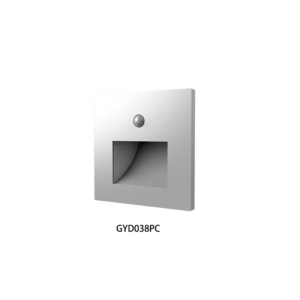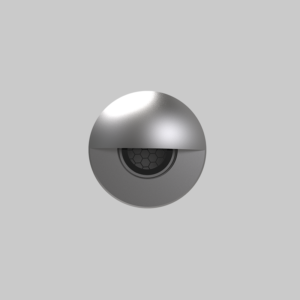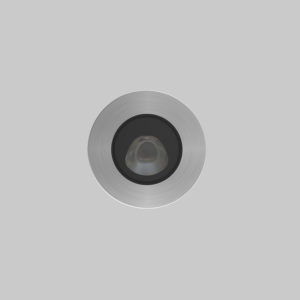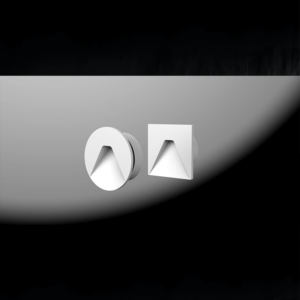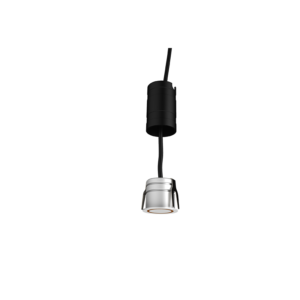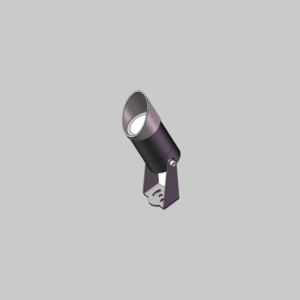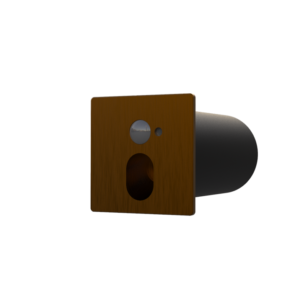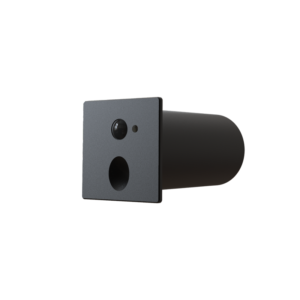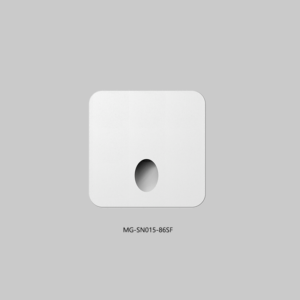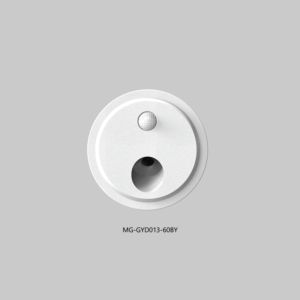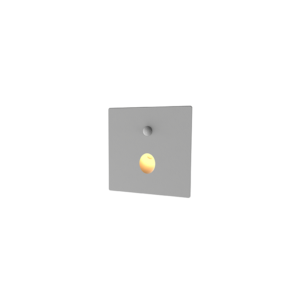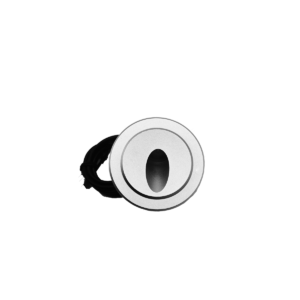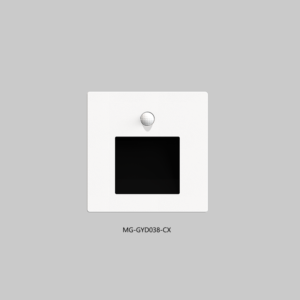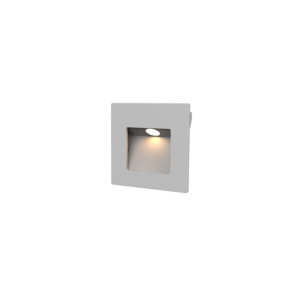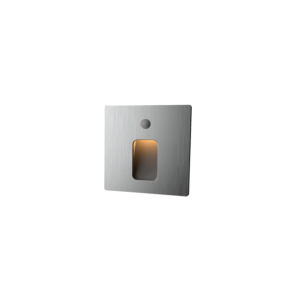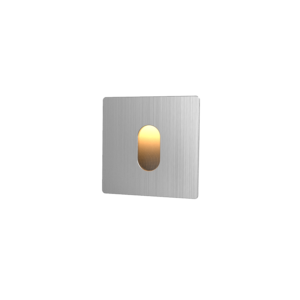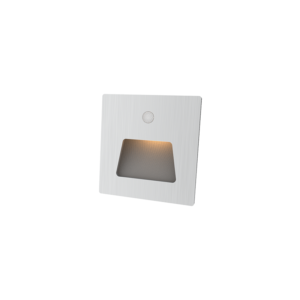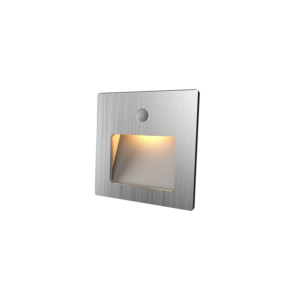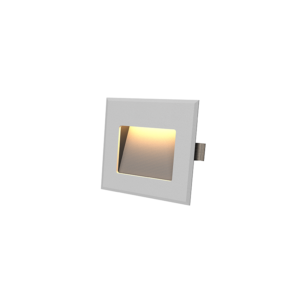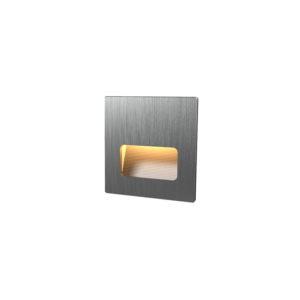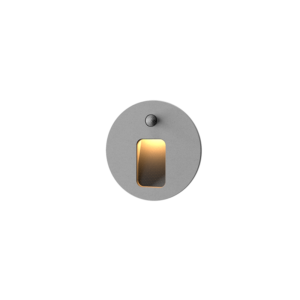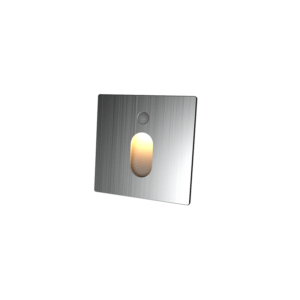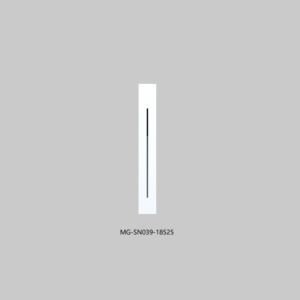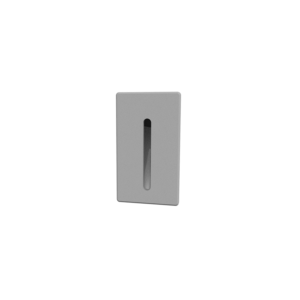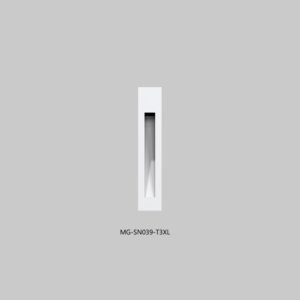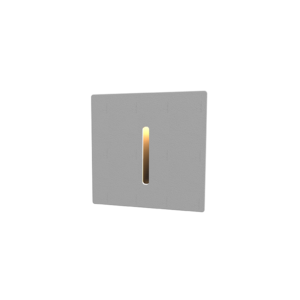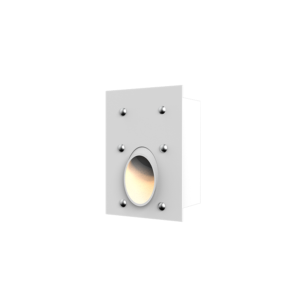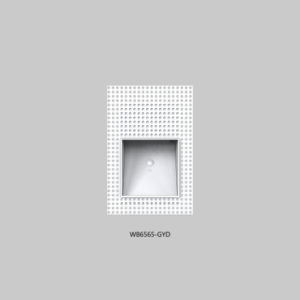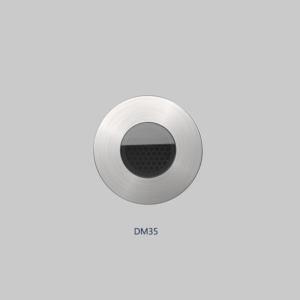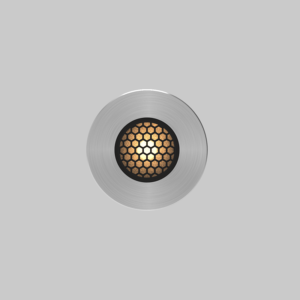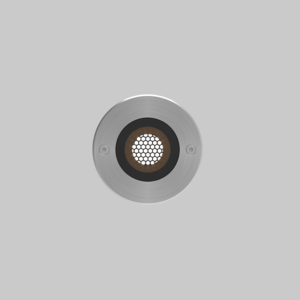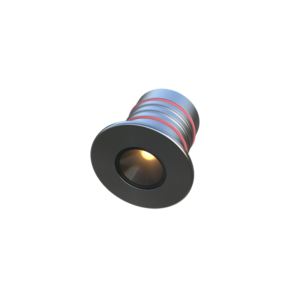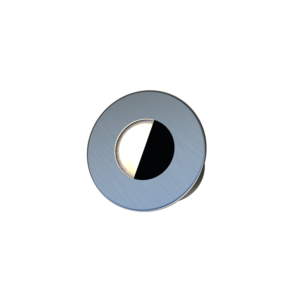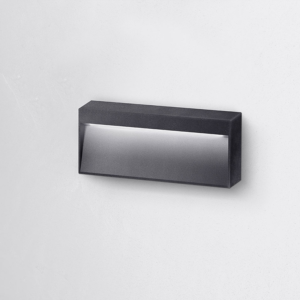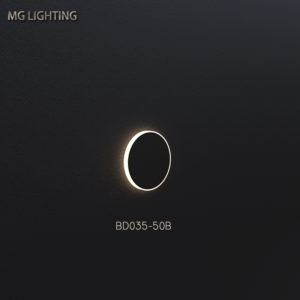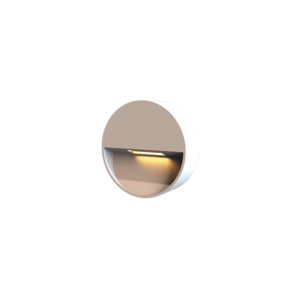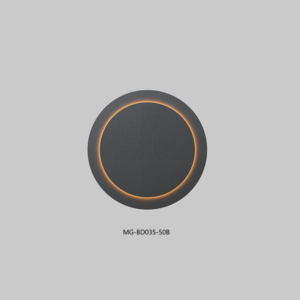The Importance of Staircase Lighting Design
Staircases as a building space in the “central spine” not only bear the function of connecting the upper and lower floors, but also play an important role in the overall design in terms of decoration. Staircase lighting design is the key to the perfect combination of functionality and art. Through reasonable lighting layout, the staircase can not only meet the basic lighting needs, but also enhance the artistic atmosphere of the space, making going up and down the stairs into a ritual experience.

Functional and Decorative
Satisfy basic lighting needs and ensure the safety of going up and down the stairs
Staircases are an indispensable functional structure in buildings, especially at night or in low-light environments, where the lighting of the staircase is particularly important. Reasonable lighting design can clearly illuminate each step, avoiding falls or collisions caused by insufficient light and ensuring the safety of users.
- Safety Lighting Standard: According to the building lighting code, the illuminance of the staircase should reach 50-100 Lux to ensure sufficient brightness.
- Uniform lighting: Lighting should be evenly distributed to avoid areas of uneven light and darkness, especially at the edges and corners of the steps.
Enhance the artistry of the space and the overall sense of atmosphere
Staircases are not only functional passageways, but also important visual elements in architectural spaces. Through lighting design, the staircase can become a scenic spot in your home and enhance the overall decorative effect of the space.
- Art of Light and Shadow: Utilizing the contrast of light and darkness to create a sense of hierarchy and three-dimensionality, making the staircase the visual focus of the space.
- Atmosphere creation: Soft lighting can create a warm and cozy atmosphere, while dynamic lighting can increase the modern and technological sense of space.

Design Concept: Scenario and Concealment
Scenario Design of Lamps and Lanterns
Scenario design closely combines the lamps with the architectural space, making the light a part of the space rather than an isolated ornament. As one of the earliest lamps used in scenographic design, the design concept of staircase lighting emphasizes the unity of function and aesthetics.
- Balance of function and aesthetics: Staircase lights should not only meet the lighting needs, but also coordinate with the overall spatial style to avoid abruptness.
- Personalized design: According to the structure of the staircase and the use of the scene, customized exclusive lighting solutions, such as curved staircases being suitable for soft curved lighting, while straight staircases are suitable for simple linear lighting.
The Effect of “Hidden Lamps and Lanterns, See Light but Not See Lamps”
The development of modern lighting technology allows lamps to be completely hidden in the building structure, leaving only soft light, creating the effect of “no light, no lamp.” This design not only enhances the aesthetics of the space, but also avoids the visual interference of the lamps.
- Embedded design: LED strips are embedded in stair treads, handrails, or wall surfaces to integrate the light with the building structure.
- Indirect lighting: Create a soft light environment by reflecting or diffusing light to avoid the glare problem caused by direct light.

The Charm of Light and Shadow: The Contrast Between Light and Dark and Space Levels
The Art of Contrasting Light and Dark
Lighting design is not only to illuminate the space, but also to create a unique visual effect through the contrast of light and shadow.
- Layers: Through the change of light intensity, highlight the outline and structure of the staircase, and enhance the three-dimensional sense of space.
- Visual focus: Using light to guide the line of sight, the staircase becomes the visual center of the space.
Interaction Between Light and Shadow and Material
Different materials have different reflection and absorption effects on light, and reasonable utilization of this can further enhance the design effect.
- Wooden stairs: Soft lighting can highlight the grain and texture of the wood, creating a cozy atmosphere.
- Metal or glass stairs: Cold-colored light can enhance the modern sense, while dynamic lighting can increase the sense of technology.
Practical Application of Staircase Lighting Design
Family Space
- Warm atmosphere: In family stairs, soft lighting can create a warm, comfortable atmosphere, suitable for the use of warm LED strip lights or wall lamps.
- Safety: Install sensor lights at the edge of the steps to ensure the safety of going up and down the stairs at night.
Commercial Space
- Artistic sense: In commercial spaces such as hotels and shopping malls, staircase lighting design can be a highlight to attract customers, for example, by using dynamic lights or colored lights.
- Brand image: Enhance the brand image and recognition of the space through unique lighting design.
Public Buildings
- Functionality: In public buildings such as subway stations and airports, staircase lighting design should focus on functionality, ensuring sufficient brightness and uniformity.
- Energy saving and environmental protection: Use energy-saving lighting and intelligent control systems to reduce energy consumption and enhance sustainability.
Future Development Trends
Intelligent Lighting
- Combination with smart home technology: Achieve automatic adjustment and remote control of lighting, such as automatically adjusting the brightness according to the ambient light, or controlling the light color and mode through a mobile app.
- Application of sensor technology: For example, human body sensor lights, which realize the effect of lights on when people come and lights off when people leave.

Environmentally Friendly and Sustainable
- Use energy-saving light fixtures: Such as LED light strips, to reduce energy consumption.
- Selection of environmentally friendly materials: Such as recyclable lamps and low-pollution manufacturing processes.
Personalization & Customization
- Customize exclusive lighting design solutions: According to user needs, such as designing unique lighting effects according to the shape of the stairs and the style of the space.
- Combine art and technology: Create interactive lighting fixtures, such as lighting changes controlled by touch or sound.
Five Staircase Lighting Design Options
As an important part of an architectural space, the lighting design of a staircase is not only about safety, but can also significantly enhance the aesthetics and ambience of a space. Below are five common staircase lighting design solutions, each with its own unique characteristics and applicable scenarios, to help you choose the most appropriate lighting according to the actual needs.
First, Ceiling Lamp Lighting at the Top
Features
- Simple installation and low cost: Ceiling light is the most common lighting method, with a simple installation process and low cost, suitable for families or projects with limited budgets.
- Good overall lighting effect: Ceiling lights are able to illuminate the entire staircase area, providing even light.
Limitations
- Difficult to illuminate every step: As the light is far from the ground, ceiling lights are difficult to illuminate every step and corner, and there may be lighting dead spots.
- Lack of hierarchy: Although the overall lighting is even, there is no contrast between light and shadow, and the visual effect is relatively single.
Applicable Scenes
Suitable for scenes with limited budgets or low lighting requirements for stairs, such as ordinary residences or small commercial spaces.
Second, Side Wall Lamp Lighting
Features
- Increase the dramatic effect: Through wall box or strip light design, wall lamps can add a sense of hierarchy and artistic atmosphere to the staircase.
- Indirect lighting: Wall sconces usually use indirect lighting, soft light, to avoid the glare caused by direct light.
Precautions
- Lamp power should not be too high: It is recommended to choose lamps within 10W/m to avoid excessive light.
- Soft surface light: Choose frosted surface or diffuse reflection design lamps to ensure uniform light and not harsh.
Applicable Scenes
Suitable for family spaces that need to create a cozy atmosphere, or as auxiliary lighting combined with other programs.
Third, Under the Handrail Lighting
Features
- Easy to install: Installing the light strip under the handrail is convenient and does not take up extra space.
- Changeable light color: LED light strip supports multiple color choices, suitable for creating a warm or stylish atmosphere.
Limitations
- Limited illumination: The light under the handrail is weak, suitable for auxiliary lighting; public areas need to be matched with other lighting methods.
- Limited application scenes: Not suitable for places with high brightness requirements, such as large shopping malls or office buildings.
Applicable Scenes
Suitable for home use, especially for modern minimalist style spaces, which can enhance the overall design.
Fourth, Under the Stair Lighting
Features
- See light, not see light: LED strip light is embedded under the step board, the light is soft and glare-free, with excellent visual effect.
- Strong contrast between light and dark: The light comes out from underneath the steps, forming a strong contrast between light and dark, outlining the outline of the stairs.
Precautions
- Pre-buried light strip in advance: You need to reserve the card slot at the early stage of decoration to facilitate the installation of the light strip and fixing screws.
- Use the whole strip: Avoid the dark area in the middle and ensure the lighting effect is even.
Applicable Scenes
Suitable for modern style or minimalist style spaces, which can significantly enhance the sense of space and art.
Fifth, Side Footing Lighting
Characteristics
- Light source is directly visible: The lamps are installed on the side of the staircase or the side of the tread plate, and the light source itself can be used as a decorative element.
- Flexible installation: No complicated pre-burial is needed; the lamps can be directly pasted or fixed on the wall or the side of the tread.
Precautions
- Lamp power should not be too high: To avoid glare or discomfort caused by too much light.
- Adaptation of style: Choose lamps and lanterns that harmonize with the overall decorative style to avoid abruptness.
Applicable Scenes
Suitable for modern minimalist or industrial style spaces, which can highlight the beauty of the structure of the stairs.
Side Wall Segmented Lighting
Characteristics
- Create a cozy atmosphere: Installing lamps on the wall rules, the light is soft and evenly distributed, suitable for creating a cozy atmosphere.
- Simple installation: No need for complex pre-burial, suitable for later remodeling or projects with limited budgets.
Limitations
- Weak visual effect: Compared with other programs, the visual effect of segmented lighting is relatively single and lacks a sense of hierarchy.
- Limited illumination: Suitable as auxiliary lighting, needs to be used with other lighting methods.
Cautions
- Selection of recessed spotlights: Control the power at 1-3W to avoid excessive light.
- Installation height and interval: Customize the installation plan according to the length of the stairs to ensure even light distribution.
Applicable Scenes
Suitable for home use, especially for spaces that need to create a cozy atmosphere.
Staircase Lighting Common Styles
Staircase lighting design not only needs to meet functional requirements, but also take into account aesthetics and atmosphere. Choosing the right style of lighting is the key to achieving this. The following are three common staircase lighting styles: LED lighting tape, wall sconces, and staircase chandeliers, each with its own unique characteristics and applicable scenarios, to help you create the ideal staircase lighting effect according to the actual needs.
First, LED Lighting Strip
Features
- Small size, bendable: LED strip light is compact, soft, and bendable, very suitable for embedding in handrails, ladder steps, and other small spaces, easily realizing a variety of modeling designs.
- Low cost: Compared with other lighting methods, LED strip lights have lower costs, low energy consumption, and long service life, making them an affordable choice.
- Striking visual effect: LED strip light can form a continuous light band, creating a smooth visual effect, especially when installed under the steps or handrail, it can outline the staircase and enhance the sense of spatial hierarchy.
Applicable Scenarios
- Lighting under the steps: Embed the LED light strip under the tread plate to realize the effect of “no light, no lamp,” suitable for modern minimalist style spaces.
- Lighting under the handrail: Installing light strips under the handrail is both convenient and fashionable, suitable for family use.
- Side footing lighting: Install the light strip on the side of the staircase, suitable for hallways with limited space.
Precautions
- Pre-buried in advance: If you choose embedded installation, you need to reserve the card slot at the early stage of decoration.
- Choose high-quality light strips: Ensure the brightness and color temperature of the light strips are uniform to avoid dark areas or color differences.
Second, Wall Lamps
Features
- Variety of shapes: Wall lamps are designed in a variety of styles, from modern minimalist to classical retro, to adapt to different styles of decoration.
- Auxiliary lighting: Wall lamps are usually used as auxiliary lighting to supplement the main light source, to enhance the overall lighting effect.
- Enhance the visual level: Paired with LED strips, wall sconces can further enhance the texture and visual level of light effects, making the staircase space more three-dimensional and vivid.
Applicable Scenarios
- Side wall lamp lighting: Installing wall lamps on the side wall of the staircase can increase the dramatic effect, suitable for spaces that need to create an artistic atmosphere.
- Segmented lighting: Installing wall sconces on the wall rules to create a cozy atmosphere, suitable for family use.
Precautions
- Lamp power should not be too high: It is recommended to choose wall lamps within 10W to avoid glare caused by too much light.
- Surface light is soft: Choose frosted surface or diffuse reflection design lamps and lanterns to ensure that the light is uniform and not harsh.
Third, Staircase Chandelier
Features
- Enhance the sense of luxury space: Staircase chandeliers usually have exquisite designs, which can significantly enhance the sense of luxury and quality of space, suitable for homeowners who require high-quality decoration.
- Unique visual enjoyment: Chandeliers combined with the staircase height space can create a unique visual effect, such as through the staggered shape to increase the sense of art in space.
- Multifunctionality: Besides the lighting function, the chandelier itself is also a work of art, which can become the visual focus of the space.
Applicable Scenarios
- Height space: Suitable for villas or duplex houses with large staircase heights, which can emphasize the height of the space.
- Luxury decoration: Suitable for high-end commercial spaces such as hotels and clubs, which can enhance the overall space level.
Precautions
- Installation height: The installation height of the chandelier should be adjusted according to the height of the stairs and the size of the space to avoid affecting passage or causing a sense of oppression.
- Style coordination: Choose a chandelier style coordinated with the overall decoration style to avoid abruptness.
Fourth, How to Choose the Right Staircase Lighting Style
Choose According to the Style of Space
- Modern minimalist style: Suitable for the use of LED strip lights and simple wall lamps, highlighting the sense of line and technology.
- Classical retro style: Suitable for the use of exquisite wall lamps and chandeliers, to enhance the artistic atmosphere of the space.
Choose According to Functional Needs
- Safety first: Choose LED strip lights or wall lights to ensure that each step is illuminated.
- Decorative priority: Choose staircase chandeliers or wall sconces with strong design to enhance the beauty of the space.
Choose According to Budget
- Affordable: LED light strips are low-cost and suitable for projects with limited budgets.
- High-end luxury: Staircase chandeliers and customized wall sconces are suitable for projects with high quality requirements.
Stair Lighting Intelligent Stair Light Control System
With the rapid development of smart home technology, intelligent staircase light control systems are gradually becoming an important part of modern architectural lighting design. Through intelligent lighting control, staircases can not only realize efficient lighting, but also improve the convenience and safety of use. The following is a detailed introduction to the intelligent staircase light control system, including system composition, wiring steps, and technical points.

I. System Composition
The intelligent staircase light control system consists of several key components, each of which undertakes a specific function to jointly realize intelligent lighting.
Under-Stair Light Bar
- Function: Installed under the stair treads to provide basic lighting.
- Technical Requirements:
- Determine the length and number of light bars according to the number of steps and width of the staircase.
- Choose low-power LED light bars to ensure energy savings and moderate brightness.
- The light bar needs to have good flexibility to adapt to different stair shapes.
Side Stair Light
- Function: Installed on the side of the stairs to provide auxiliary lighting and decorative effect.
- Technical Requirements:
- Choose running LED strip, with white light being the most popular due to its soft light and good visual effect.
- The strip needs to have a high color rendering index (CRI>80) to ensure natural and non-glaring light.
Sensor
- Function: Detect human activity and realize automatic light switch.
- Technical Requirements:
- Adopt high-sensitivity human body sensors to ensure that the detection range covers the entire staircase area.
- The sensor needs to have anti-interference ability to avoid false triggering or missed triggering.
- Usually need to install a sensor at the upper and lower ends of the stairs to ensure full coverage.
Controller
- Function: Manage the operation of the entire lighting system, support multiple control modes.
- Technical Requirements:
- Dedicated controllers need to support at least 32 staircases, with more levels expandable by cascading.
- The controller should have multiple modes, such as constant light mode, sensor mode, and timer mode.
- Support remote control, such as through cell phone app or voice assistant (e.g., Alexa, Google Assistant).
Switching Power Supply
- Function: Provide stable power supply for the entire system.
- Technical Requirements:
- Ensure that the voltage and power of the power supply match the controller, light strips, and other devices.
- Choose a high-efficiency power supply to reduce energy consumption and heat generation.
- The power supply should be equipped with overload protection and short-circuit protection to ensure the safe operation of the system.
Wiring Steps
The installation of the intelligent staircase light control system needs to be carried out strictly according to the wiring steps to ensure the stability and reliability of the system.
Pre-Embedded Cables
- Starting from the corner position at the bottom of the staircase, haul the pre-buried cables for the induction light strip.
- Use high-quality cables to ensure they are resistant to abrasion and aging.
Gradual Cable Pulling
- Starting from the first tread, pull the cable gradually upwards to the highest tread.
- Ensure that the cables are routed neatly to avoid crosses or tangles.
Fixing the Tread Bar
- Secure the tread bar on each step and arrange the screw holes according to the size of the step.
- Normally, 3 screws per meter of tread are required to ensure stability.
Installation of Light Strip
- Install the induction light strip in the light slot of the tread strip, ensuring the light strip fits tightly with the slot.
- Connect the light strip wire head with the main wire to ensure the circuit is smooth.
Connect the Controller and Power Supply
- Connect the light strip, sensor, and controller to the switching power supply to ensure voltage and power match.
- Perform a system test to ensure all components are functioning properly.
Technical Points and Optimization Suggestions

Optimize Sensor Layout
- The installation position of the sensor needs to cover the entire staircase area to avoid detection blind zones.
- For long staircases, the number of sensors can be increased or high-sensitivity sensors can be used.
Lighting Mode Customization
- Customize the lighting mode according to the usage scenario, such as night mode (low brightness), welcome mode (dynamic lighting), etc.
- Set the timer function through the controller, e.g., switch mode automatically at specific time periods.
Energy Saving and Environmental Protection
- Reduce system energy consumption by choosing low-power LED strips and high-efficiency power supplies.
- Combine with natural light sensors to realize automatic adjustment of light brightness and further energy savings.
System Expandability
- The controller needs to support the cascade function to expand more staircase levels or add other intelligent devices in the future.
- Reserve interfaces for subsequent upgrading or integration with other smart home systems.
Practical Application Cases
Family Residence
- In villas or duplex houses, the intelligent staircase light control system can significantly improve the convenience and safety of use.
- Remote control via mobile app allows users to adjust the lighting mode or check the system status at any time.
Commercial Space
- In hotels, shopping malls, and other public places, the intelligent stair light control system can not only provide efficient lighting but also enhance the artistic atmosphere of the space.
- Combined with dynamic lighting effects, it attracts customers’ attention and enhances the brand image.
Public Buildings
- In public buildings such as subway stations and airports, intelligent stair light control systems can ensure safety at night or in low-light environments.
- Automatically switching lights on and off through sensors reduces energy consumption and improves sustainability.
Staircase Lighting Design Suggestions and Precautions
Advance Planning
- Reserve circuits and card slots at the early stage of decoration
- Importance: Staircase lighting design involves circuit wiring and lighting installation. If the wiring and slots are not reserved at the beginning of the renovation, the later transformation will be very troublesome and costly.
- Implementation Suggestions: Communicate fully with the designer and construction team to clarify the lighting design program. During the construction of the staircase structure, reserve the slot for the light tape, power connector, and sensor position. Ensure that the line direction is reasonable and avoid conflict with other pipelines.
Consider Future Upgrades
- Reserve enough power interfaces and control interfaces for future expansion or upgrade of the intelligent lighting system.
- Choose modular design lamps and lanterns for easy maintenance or replacement in the future.
Combination Design
- Use a combination of lighting methods
- Advantage: A single lighting method may not be able to meet all needs. Combined design can take into account functionality, safety, and aesthetics.
- Common combination program:
- Step down lighting + Handrail lighting: Ensure that each step is illuminated while enhancing the overall design.
- Top ceiling light + Side wall lights: Provide overall illumination while adding a sense of hierarchy to the space.
- LED strip light + Staircase pendant light: Combining functionality and decoration to create a luxurious atmosphere.
Layered Lighting Design
- Basic Lighting: Use ceiling lights or LED strip lights to provide overall brightness.
- Accent lighting: Use wall lamps or chandeliers to highlight the decorative elements of the staircase.
- Auxiliary lighting: Use induction lamps or footlights to enhance safety and convenience.
Third, the Choice of Light Source
Choose a Soft and Moderately Bright Light Source
- Importance: Staircases are frequently used areas. Too strong or too weak light will affect the user experience and safety.
- Implementation Recommendations:
- Color temperature selection: It is recommended to use 3000K-4000K warm white light, which is both warm and bright.
- Brightness control: Ensure that the staircase illumination reaches 50-100 Lux to avoid dark areas or glare.
- Luminaire type: Choose diffuse reflection or frosted surface design lamps and lanterns to ensure even and soft light.
Energy Saving and Environmental Protection
- Choose low-power LED fixtures to reduce energy consumption.
- Use intelligent control systems to realize automatic adjustment and timer switching of lights to further enhance energy-saving effects.
Style Adaptation
- Select lamps and lanterns according to the overall decoration style.
- Modern minimalist style: Suitable for the use of linear LED light strips, embedded spotlights, or minimalist wall lamps, highlighting the sense of line and technology.
- Classical retro style: Suitable for the use of exquisite modeling wall lamps or chandeliers to enhance the artistic atmosphere of the space.
- Industrial style: Suitable for the use of metal fixtures or bare lamps, highlighting the sense of rugged design.
Color and Material Coordination
- The color and material of the lamps should be coordinated with the staircase and the surrounding environment. For example, wooden staircases with warm tone lamps, metal staircases with cool tone lamps.
- Avoid the use of overly complex lamp designs to avoid conflict with the overall style.
Other Considerations
Safety
- Ensure that the lamps and lanterns are firmly installed to avoid loosening or falling off.
- Choose waterproof and dustproof fixtures, especially when used outdoors or in humid environments.
Convenience of Maintenance
- Choose luminaires that are easy to clean and maintain to avoid dust accumulation or difficult dismantling.
- Ensure that replacement and maintenance of the luminaire will not cause damage to the stair structure.
User Experience
- In home environments, prioritize the needs of the elderly and children, such as choosing sensor lights or low-brightness luminaires to avoid glare.
- In commercial or public spaces, ensure that the lighting design complies with safety regulations, such as providing adequate lighting in case of emergency.
Conclusion
Staircase lighting design is a complex and detailed process that requires comprehensive consideration of functionality, aesthetics, and practicality. By planning ahead, designing in combination, choosing light sources wisely, and adapting styles, you can create a staircase lighting environment that is both safe and aesthetically pleasing. Whether it is a family home, commercial space, or public building, reasonable lighting design can significantly improve the experience of use and space aesthetics. If you are planning a staircase lighting design, you may wish to refer to the above suggestions to create a charming staircase environment!



